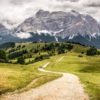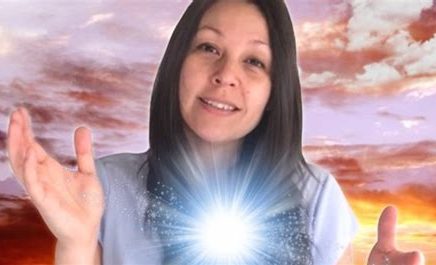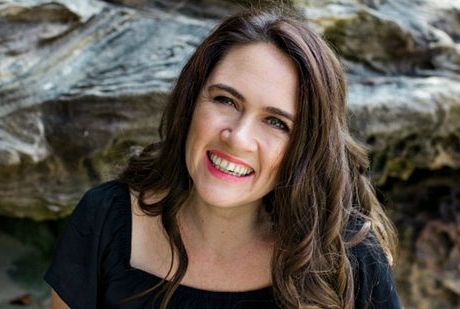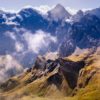Crater Lake, Oregon
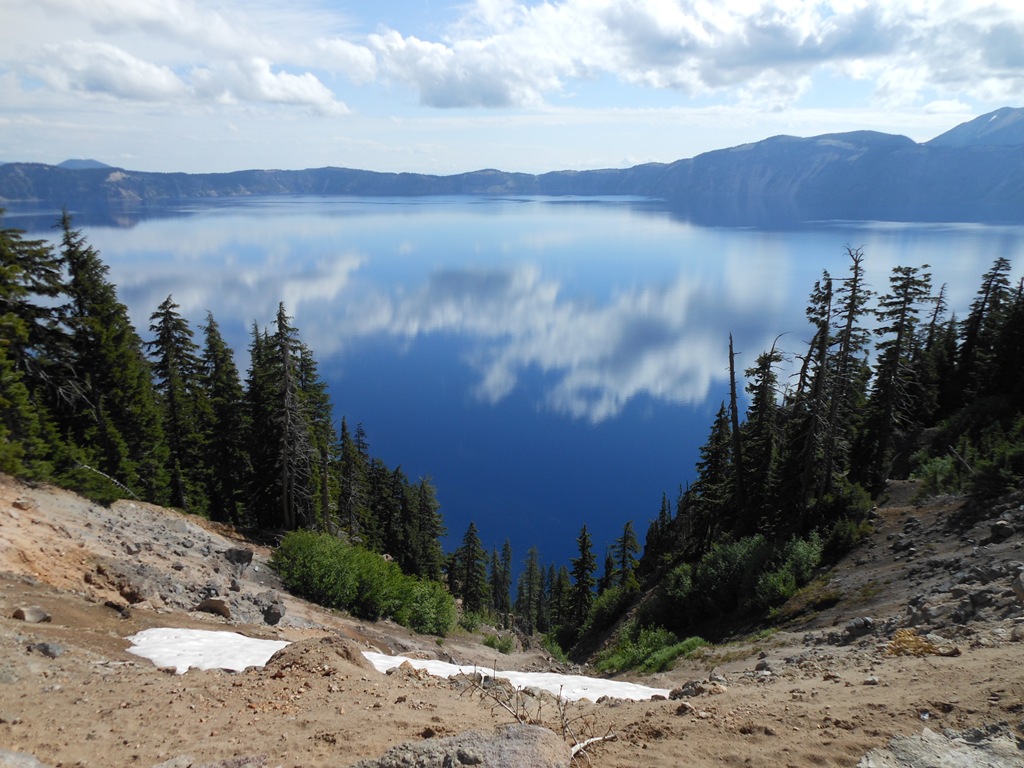
Crater Lake was formed around 4680 BC when the volcanic Mt. Mazama blew its top in spectacular fashion. The eruption was estimated to have been 42 times more powerful than that of the Mt. St. Helens’ 1980 blast. The mountain peak fell into the volcano’s partially emptied neck and magma chamber, and Crater Lake was formed in the new crater.
“Crater Lake has inspired people for thousands of years. No place else on earth combines a deep, pure lake, so blue in color; sheer surrounding cliffs, almost two thousand feet high; two picturesque islands; and a violent volcanic past.” – U.S. Park Service
Crater Lake has long been revered as sacred by the Klamath Tribe of Native Americans, whose myths embody the catastrophic event they witnessed thousands of years ago. The central legend tells of two Chiefs, Llao of the Underworld and Skell of the World Above, pitted in a battle which ended in the destruction of Llao’s home, Mt. Mazama.
Crater Lake was a primary site for Native American vision quests. Contributing to the mystique, Crater Lake was known as a particularly dangerous site for these quests. Gaining a vision of the supernatural beings residing in the lake was thought to be the ultimate epiphany. The seeker would often swim at night, underwater, to encounter the spirits lurking in the depths. The quest for such spirits required great courage and resolution. Another ritual at Crater Lake involved dangerous climbs along the caldera wall. One who could reach the rim without falling was thought to have superior spiritual power. Rocks were often piled as feats of endurance and evidence of spiritual effort.
Tthe Klamath and Modoc Indians in the vicinity of Crater Lake felt the lake should be respected for its status as the dwelling place of powerful spirits and approached only when necessary to perform certain ceremonial acts. The medicine men, or shamans, of the tribes who participated in diligent quests for power given in the form of songs and visions, were much respected:
The Indians view Crater lake and its surroundings as holy ground and approach its mystic waters with reverence and awe. They attach to its existence the thought that the Great Spirit hallows it by his presence. The ancient traditions of the tribes relate many supernatural events handed down with the mythical lore of the past. Only medicine men frequented the sacred spot, and when one felt called as teacher and healer it was a feature of his novitiate to spend weeks in fasting, and communion with the dead and prayer to the Sahullah Tyees, and so become imbued with inspiration to qualify him for his work. Beside this wonder-shore they saw visions and dreamed dreams, and when they came down from the mountain mysteries to mingle with mortals they brought the odor of sanctity with them and were viewed with reverence as having communed with the unknown world. [14]
Today, Crater Lake remains a sacred site for power quests and other spiritual pursuits, both for members of the Klamath Tribe and those interested in Native American spirituality. Crater Lake is a spectacular 250-mile drive from Portland along some of Oregon’s most beautiful and diverse landscape. Scenic high desert panoramas lead to the dramatic Cascade Mountain Range, blanketed by Oregon’s oldest, most pristine forests. A pilgrimage to the former Mt. Mazama is guaranteed to inspire religious-like awe.


